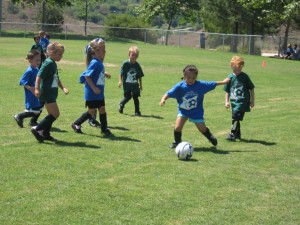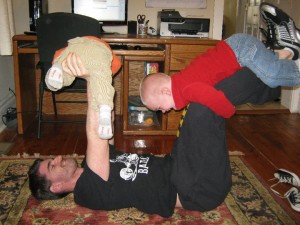Overspecializing Young Athletes is a Mistake

As a kid, I remember playtime well. We did everything from play sports basketball, football and baseball (although I was never very good at any of them), to riding bikes and skateboards, to climbing trees and hills. Even during Iowa winters, my brothers and I would amuse ourselves (and likely our parents) by going into the pasture behind our house and sledding/tobogganing/sliding down the giant 300-yard hill on our butts, only to have to begin the slow march all the way back to the top to do it again. Sure, we had video games, but those were usually reserved for when the weather was bad or when the sun was down. When we could, we played, and we did a TON of different things.
Now, as a father of two quickly-growing boys, my job is to make sure that they receive that same experience. The problem is that it’s significantly harder to give kids that time nowadays, for several reasons. First, I live in the city limits of Chicago, so I am in no way able to just let my kids roam free without worrying about them the way my parents could in a rural Iowa farm town. Second, the rapid growth of entertainment-oriented technology is way, WAY above what I can ever remember. My not-even-4-year-old son Ethan can work my smartphone, turn on our computer and find his computer games, and operate our Netflix all by himself. With all of those temptations, who wants to have to go outside and move?
Combine that with extreme budget cuts for most schools that have required the reduction or complete elimination of most physical education programs, and young athletes (and young adults in general) are not being exposed to as wide of a variety of stimuli as in years past. That is why I am a firm believer that kids younger than high school have no business in being single-sport athletes.
I’ve seen it a lot lately, talking with parents when they come into our facility looking to have their son or daughter train with us to improve their sports prowess. “But,” they’ll say, “we don’t have a lot of time, because Johnny plays soccer year-round, and this summer he’s going to a soccer camp where they’ll have him do conditioning drills for 7 hours a day for six weeks, then he’ll start his fall league where he’ll practice 5 days a week and have 2 games a week, usually double-headers, then he’ll play indoor soccer during the winter, then in the spring he’s back in an after-school soccer camp and then he has to practice 500 kicks before he goes to bed.”
“Oh, and his ankles always hurt. I think it might be genetic.”
Really? It’s a miracle his feet aren’t detachable at this point.
Even worse, beyond just being single-sports athletes, I’m seeing lots of kids who are now single-sport, single-position athletes, at the ripe old age of 9. “My son Billy is going to be a pro pitcher some day, give me some drills so he can throw faster.” What he really means is “give me some drills so I can destroy his rotator cuff so badly that it’ll look like melting swiss cheese left out on a hot summer day.”
There is no way around it – overspecialization at a young age increases the risk for injury. 10-year-olds should not be capable of tearing a hamstring, yet they occur in dramatic numbers now. There needs to be balance in activity, and it’s not happening anymore.
I have a simple request for parents who might read this: please, PLEASE, make your kids play more than one sport. I don’t care if it means you go out into your driveway and play H-O-R-S-E with them every night after soccer practice. I don’t care if you take your kids to the park and let them climb the jungle gym and the monkey bars. Just don’t pigeonhole them into one activity or sport and set them up for potentially life-altering problems down the road. Let your kids be kids.


Zach,
Wounderful article,very funny. I totally agree.